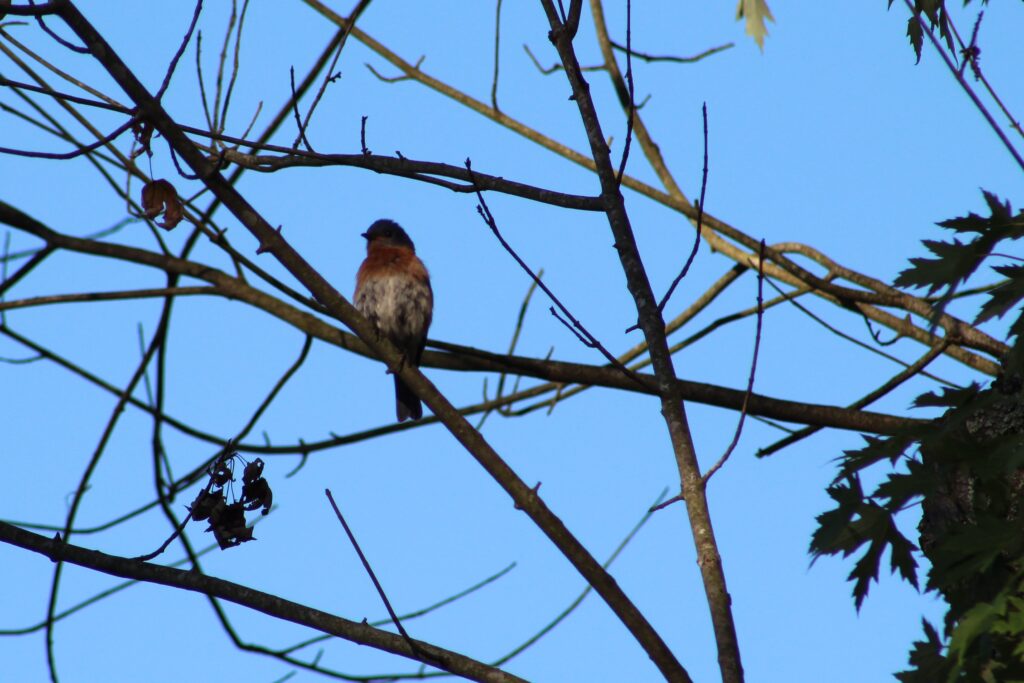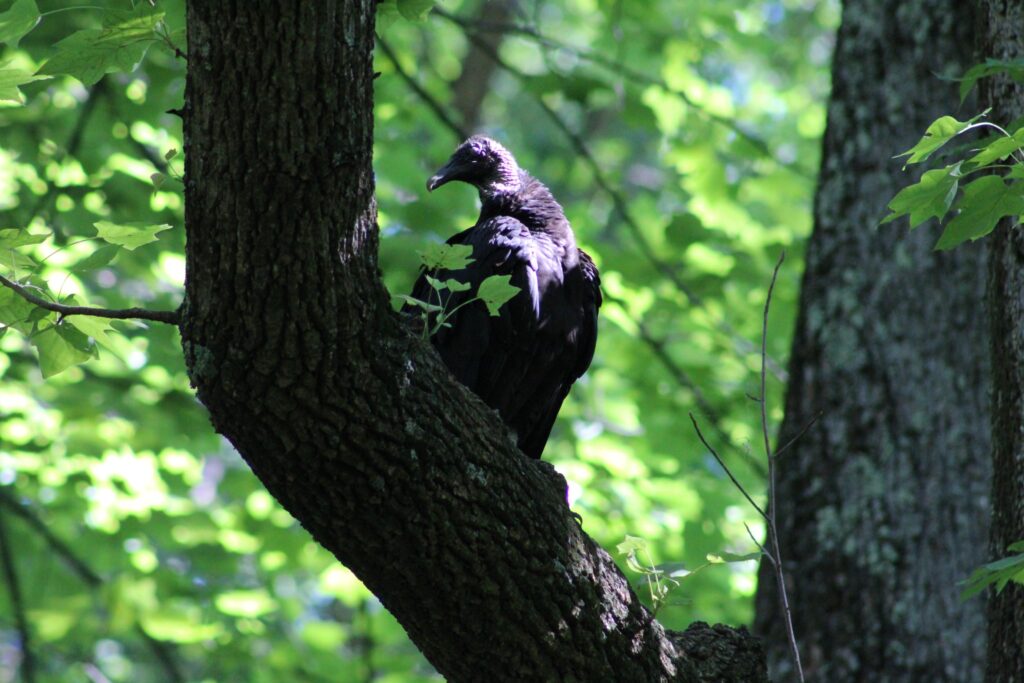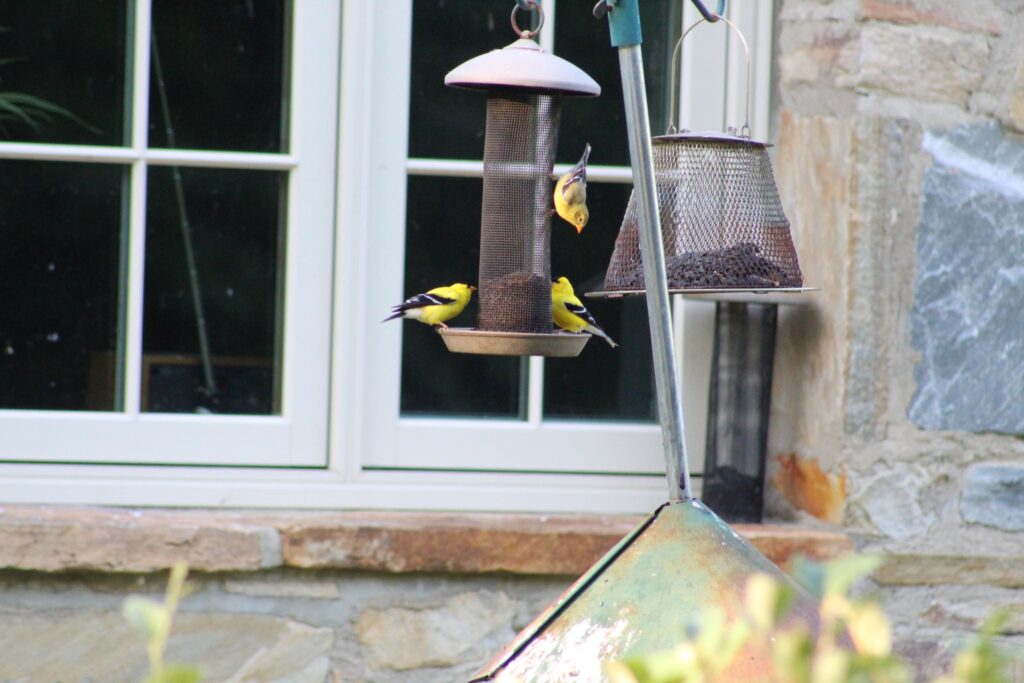
Preserve Assistant Deneith Reif and I recently had the opportunity to join ornithologist Jacob Saucier on a birding hike around the Preserve’s south section. Jacob is a long-time friend of the Preserve and museum specialist at the Smithsonian Museum of Natural History. Between his travels to record bird songs and calls all over the world, Jacob enjoys spending time at the Preserve, where he is currently building a “sound library.” Make sure to follow our Facebook page where we regularly share his latest recordings!

Both Deneith and myself are avid birders, but are working on developing our “birding by ear” skills. Jacob graciously offered his expertise, so the three of us met up to learn how many bird species we could see—and hear—on the public trail system. We started at 7 AM, sleeping in by birding standards, but wanted to get a feel for what species would be active during the trails’ open hours (8-6).
Over the next five hours, we covered several miles of the red, green, and yellow trails. But the birding began even before we reached the trailhead. The Preserve’s parking lot area creates excellent “edge habitat.” Many striking species of bird prefer these liminal spaces between forest and open land. In the first few minutes we spotted the indigo bunting (Passerina cyanea), cedar waxwing (Bombycilla cedrorum), and European rock doves, AKA pigeons (Columba livia). Once on the trails, highlights included several prolonged views of scarlet tanagers (Piranga olivacea) and the discovery of an active black vulture (Coragyps atratus) nest, including an adorable baby! We also enjoyed wood thrushes, a red-shouldered hawk, Acadian flycatchers, and more.

Although birding was the focus of the day, we also paused to appreciate other fascinating features of the Preserve ecosystem. We came across an American toad (Bufo americanus) hopping along the trail and we took the time to admire a rare living American Chestnut (Castanea dentata) tree. Sometimes being so focused on maintaining the Preserve can distract from its beauty and significance. It was so refreshing to take a day to fully appreciate the wonderful place we get to work.
Check out the full list of the 36 bird species recorded on this hike at ebird.com. By uploading our data here, we are also providing valuable data points for scientists studying bird populations. Deneith and I hope to offer birding hikes like this one to the public soon—so keep an eye on our Facebook and Instagram for updates!
